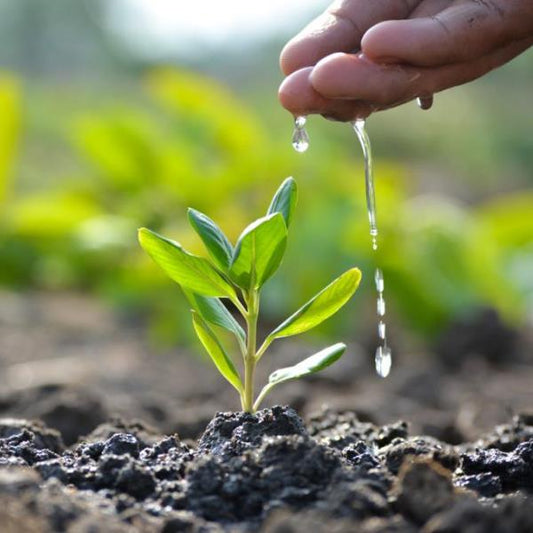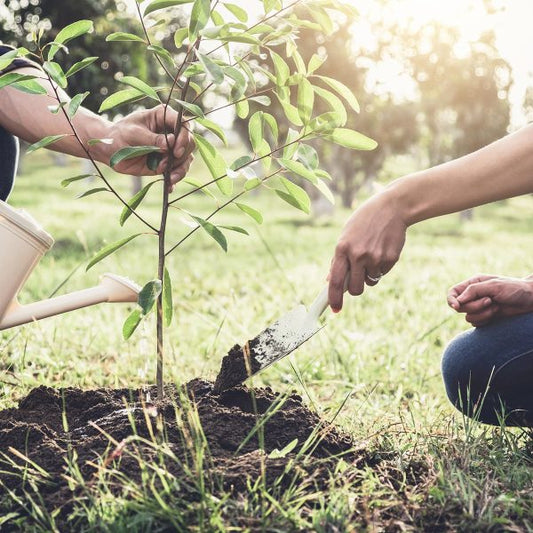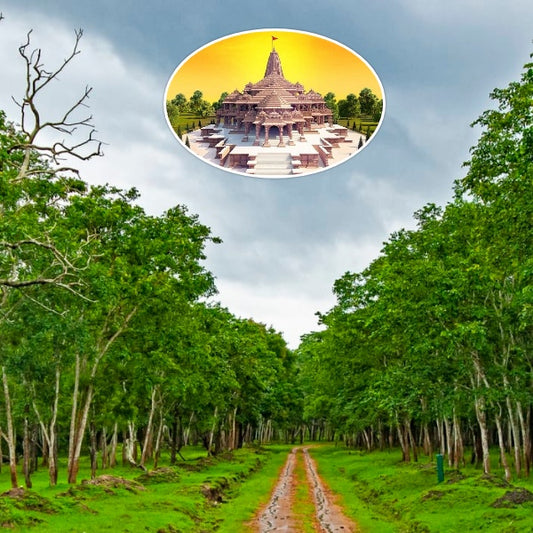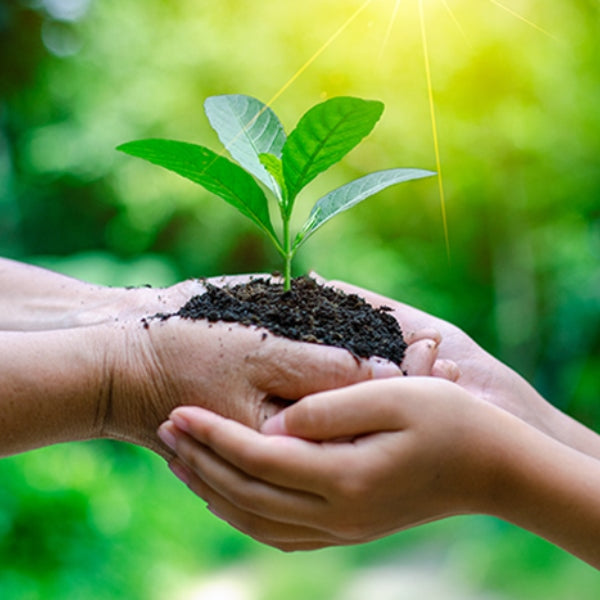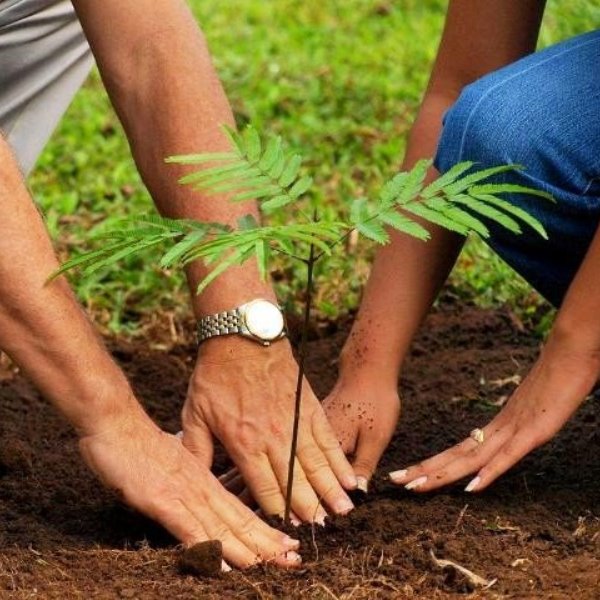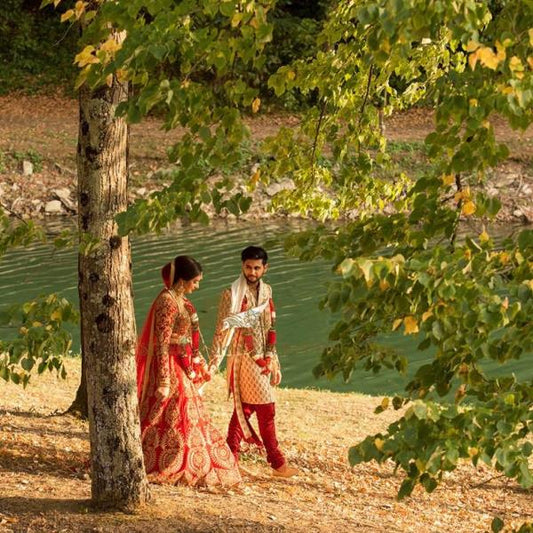We provide bulk tree saplings for self plantations by individuals, organizations, or governments for the purpose of planting them in different areas, such as forests, parks, or urban landscapes. Bulk Read more
-
Tree Saplings of Native Trees
Regular price From ₹ 149,500Regular priceUnit price per
About Tree Saplings
We provide bulk tree saplings for self plantations by individuals, organizations, or governments for the purpose of planting them in different areas, such as forests, parks, or urban landscapes.
Bulk tree saplings are young trees that are grown in nurseries specifically for tree plantation activities. These saplings are usually purchased in bulk quantities by individuals, organizations, or governments for the purpose of planting them in different areas, such as forests, parks, or urban landscapes.
Bulk tree saplings come in various sizes and species, depending on the plantation site's location and the desired outcome of the plantation activity.
Ensuring good quality tree saplings is essential for the success of tree plantation activities. High-quality tree saplings have a better chance of survival and growth, leading to a healthier and more resilient forest or landscape.
Quality tree saplings should have healthy leaves, strong stems, and a well-developed root system. They should also be disease-free and grown in suitable conditions, such as the right soil type and sunlight exposure.
Bulk tree saplings are essential for large-scale plantation projects, as they provide a cost-effective and efficient way to plant a large number of trees at once.
They are also beneficial for the environment and local communities, as they help in mitigating climate change, promoting biodiversity, improving soil quality, and providing economic benefits such as timber and non-timber forest products.
Bulk tree saplings can be purchased from nurseries or forestry departments that specialize in the production of tree saplings for planting activities.
Before purchasing bulk tree saplings, it is important to ensure that the species selected are suitable for the plantation site and that the saplings are healthy and disease-free. Adequate care and maintenance must also be provided to the saplings after planting to ensure their survival and growth.
Sapling Care Tips
Learn essential tips for nurturing tree saplings to ensure their healthy growth. Proper care, watering, and protection are crucial during the initial stages of a sapling's life.
Best Sapling Varieties
Explore different tree sapling varieties suitable for various climates and purposes. This subkeyword delves into the diverse options available for those interested in planting trees from saplings.
Sapling Planting Techniques
Discover effective techniques for planting tree saplings to maximize their chances of survival. Proper planting depth, soil preparation, and post-planting care are essential considerations.
Sapling Adoption Programs
Engage in sapling adoption programs that promote environmental conservation. Learn about initiatives where individuals can adopt and care for tree saplings, contributing to larger reforestation efforts.
Urban Sapling Plantation
Explore the challenges and benefits of planting saplings in urban environments. This subkeyword addresses the importance of green spaces in cities and the role of saplings in urban reforestation.
Indigenous Sapling Species
Focus on native and indigenous sapling species for specific regions. Understanding the importance of planting trees that are well-adapted to local conditions enhances the success of sapling growth and overall environmental impact.
Browse Trees Plantations
FAQ
What are bulk tree saplings?
Bulk tree saplings refer to a large number of young trees grown in nurseries specifically for tree plantation activities.
Where can i buy bult tree saplings at low cost?
You can buy them on growbillion trees
Where can I buy bulk tree saplings?
Bulk tree saplings can be purchased from nurseries, forestry departments, or online suppliers that specialize in the production of tree saplings for planting activities.
What are the factors that determine the quality of tree saplings?
The quality of tree saplings is determined by factors such as the species, age, health, size, and growing conditions of the saplings.
How can I ensure that the tree saplings I purchase are healthy?
Look for signs of good health, such as strong stems, healthy leaves, and a well-developed root system. The saplings should also be free from any signs of disease or pests.
What are some common diseases that affect tree saplings?
Common diseases that affect tree saplings include root rot, leaf spot, and powdery mildew. It is important to purchase saplings from a reputable source that follows best practices in nursery management to minimize the risk of disease.
How can I ensure that the saplings I purchase are the right size for my project?
The size of the saplings you purchase depends on the project's goals and the planting site's conditions. A professional nursery or forestry department can help you select the appropriate size saplings for your project.
What kind of growing conditions are necessary for producing high-quality saplings?
High-quality saplings require the right soil type, sunlight exposure, and water supply. They also need appropriate fertilization and pest control measures to ensure their health and growth.
How can I ensure that the saplings I purchase are of the right species for my project?
It is important to select the appropriate species of saplings based on the project's goals and the planting site's conditions. A professional nursery or forestry department can help you select the appropriate species.
Can saplings from different sources vary in quality?
Yes, saplings from different sources can vary in quality. It is important to purchase saplings from a reputable source that follows best practices in nursery management to ensure their health and growth.
What are the benefits of purchasing high-quality saplings?
High-quality saplings have a better chance of survival and growth, leading to a healthier and more resilient forest or landscape. They also require less care and maintenance after planting, reducing the cost and effort of the project.
How many tree saplings should I buy for my plantation project?
The number of tree saplings needed depends on the size and location of the plantation site, as well as the desired outcome of the project. A professional nursery or forestry department can help you determine the appropriate number of saplings needed for your project.
How do I select the right species of tree saplings?
The species of tree saplings selected should be suitable for the plantation site's location, soil type, and climate. A professional nursery or forestry department can help you select the appropriate species.
How can I ensure that the tree saplings I purchase are of good quality?
Good quality tree saplings should have healthy leaves, strong stems, and a well-developed root system. They should also be disease-free and grown in suitable conditions. Ensure that the supplier you purchase from has a good reputation and provides high-quality saplings.
How should I transport and store the tree saplings?
Tree saplings should be transported and stored carefully to prevent damage. They should be kept in a cool, dry place and protected from extreme temperatures, sunlight, and wind.
When is the best time to plant tree saplings?
The best time to plant tree saplings depends on the species and the local climate. In general, spring and fall are the best times to plant tree saplings.
How should I prepare the plantation site before planting tree saplings?
The plantation site should be properly prepared before planting tree saplings. This includes clearing any debris, tilling the soil, and adding any necessary amendments such as fertilizers.
How do I plant tree saplings correctly?
Tree saplings should be planted at the appropriate depth and distance from each other. The roots should be spread out in the planting hole, and the soil should be firmly packed around the sapling.
How often should I water the tree saplings after planting?
Tree saplings should be watered regularly after planting, especially during the first few weeks. The frequency of watering depends on the local climate and soil conditions.
How do I protect the tree saplings from pests and wildlife?
Tree saplings can be protected from pests and wildlife by using physical barriers such as fencing, netting, or tree shelters. Chemical control methods can also be used, but they should be used sparingly and only when necessary.
How long does it take for tree saplings to grow into mature trees?
The time it takes for tree saplings to grow into mature trees depends on the species and local growing conditions. It can take anywhere from several years to several decades for a tree to reach maturity.
How do I ensure that the tree saplings survive and grow after planting?
Tree saplings need adequate care and maintenance after planting to ensure their survival and growth. This includes proper watering, mulching, pruning, and protecting them from pests and wildlife.
How can tree plantation activities benefit the environment and local communities?
Tree plantation activities can benefit the environment by mitigating climate change, promoting biodiversity, improving soil quality, and reducing erosion. They can also provide economic benefits such as timber and non-timber forest products, and enhance the beauty and recreational value of the landscape.
What are some best practices for implementing tree plantation activities?
Some best practices for implementing tree plantation activities include engaging with local stakeholders, selecting suitable species of trees, establishing long-term maintenance plans, and monitoring the impact of the project on the environment and local communities.
Can tree plantation activities contribute to the local economy?
Yes, tree plantation activities can contribute to the local economy by creating jobs, generating income for local communities, and supporting local industries such as timber and forestry.
How much does it cost to plant a tree for corporates?
The cost of planting a tree start at Rs 99. It can vary depending on the tree species, size, and where it is located.
Can I personalize the tree?
Yes, you can personalize the gift of a tree via a certificate and a personalized greeting card with the gift.
Can I choose where the tree is planted?
No, tree plantation happens in bulk in forest with capacity of 10,000 or more plants. location is chosen based availability.





